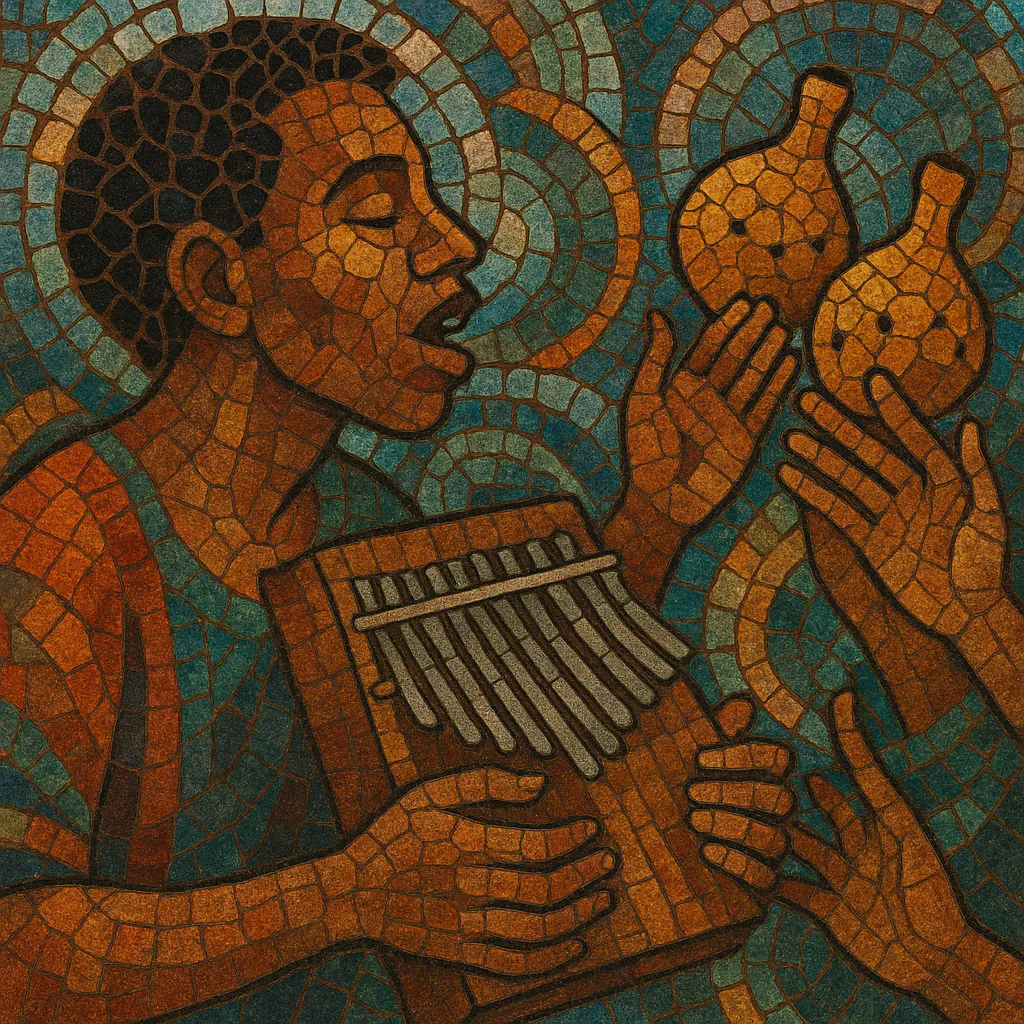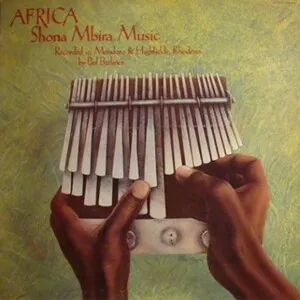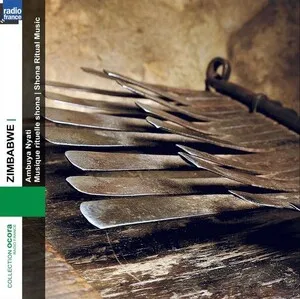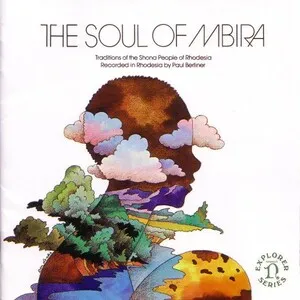Shona mbira music is the ceremonial and social music of the Shona people of Zimbabwe, centered on the mbira dzavadzimu (a hand-held lamellophone) accompanied by hosho (gourd rattles), handclaps, and voice.
It is built from cyclical, interlocking parts—kushaura (lead) and kutsinhira (responding) patterns—that create shimmering polyrhythms in a 12/8 feel. Characteristic tunings (such as Nyamaropa, Dambatsoko, and Mavembe/Gandanga) shape modal sonorities distinct from Western major/minor harmony.
Traditionally performed in bira ceremonies to invite ancestral spirits, the music’s continuous cycles, subtle variation, and call-and-response vocals foster trance, community participation, and a strong sense of continuity with the past.
The mbira tradition among the Shona dates back several centuries, with oral histories and instrument lineages pointing to deep precolonial roots. Repertoires such as “Nhemamusasa” and “Kariga Mombe” are associated with ancestral veneration and social cohesion, and performance typically occurs in bira ceremonies where music summons and honors spirits.
During the late 1800s and early 1900s, colonial policies and missionary pressures stigmatized indigenous ritual practices, yet mbira music persisted in homes and rural communities. Master musicians safeguarded tunings, repertoires, and performance etiquette, transmitting knowledge through apprenticeships and family lineages.
From the 1960s–1970s, artists and scholars helped bring mbira to global attention. Dumisani Maraire introduced mbira performance to North America, and subsequent recordings and ethnographies (notably Paul Berliner’s work) documented repertories, tunings, and performance practice. The music gained further visibility in the lead-up to and aftermath of Zimbabwe’s independence in 1980, with urban and diasporic ensembles performing on stages and in classrooms worldwide.
Today, Shona mbira music thrives in ceremonial contexts and on concert stages. Artists innovate within tradition by crafting new kushaura/kutsinhira variations, experimenting with mbira ensembles, and integrating voice and hosho textures for wider audiences. Educational programs, instrument making, and digital recordings have reinforced both preservation and creative renewal.








